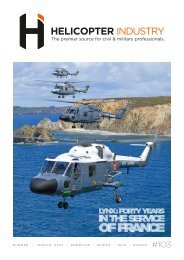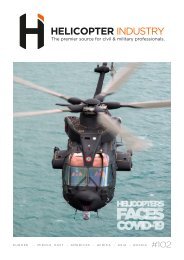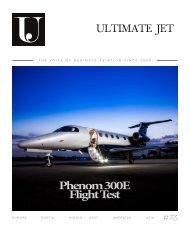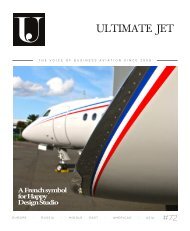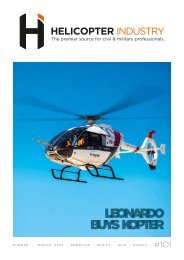Magazine Ultimate Jet #74
You also want an ePaper? Increase the reach of your titles
YUMPU automatically turns print PDFs into web optimized ePapers that Google loves.
INSURANCE I 60<br />
T<br />
he first aviation policy was written in 1911 by Lloyd’s of London, in order to cover the monoplanes and biplanes of<br />
the time. Today, Lloyd’s aircraft policy, commonly named AVN1C, is a widely used insurance mechanism covering<br />
hull losses as well as passenger injuries and liability to third parties caused by an aviation accident. The basic policy<br />
wording is adapted by adding various model clauses. Initially adopted by the London market, these vetted exclusions and<br />
endorsements have evolved to become industry standards. Insurance brokers and underwriters worldwide commonly<br />
price aviation risks using strings of AVN, LMA, NMA and LSW references, which can seem cryptic to the neophyte. For<br />
example, AVN 48B introduces the exclusion of war, hi-jacking and other deliberate acts of violence. Then AVN52E (other<br />
than AVN 48b) reinstates cover for passenger injuries in war circumstances, except in case of detonation of a nuclear<br />
weapon or other radioactive material. Damage to aircraft hull during hostilities is also written back into policies with<br />
LSW555D or AVN51. Such clauses were fundamental to address the 9/11 losses, the disappearance of Malaysia flight<br />
MH370, the shooting down of flight MH17 and the crash of Germanwings flight 4U 9525. Successive LSW617 clauses<br />
exclude certain countries or regions from the agreed geographical flight zone. Other endorsements aim to address<br />
practicalities such as AVN90 providing cover for ferry flights performed by pilots who are not named on the policy.




